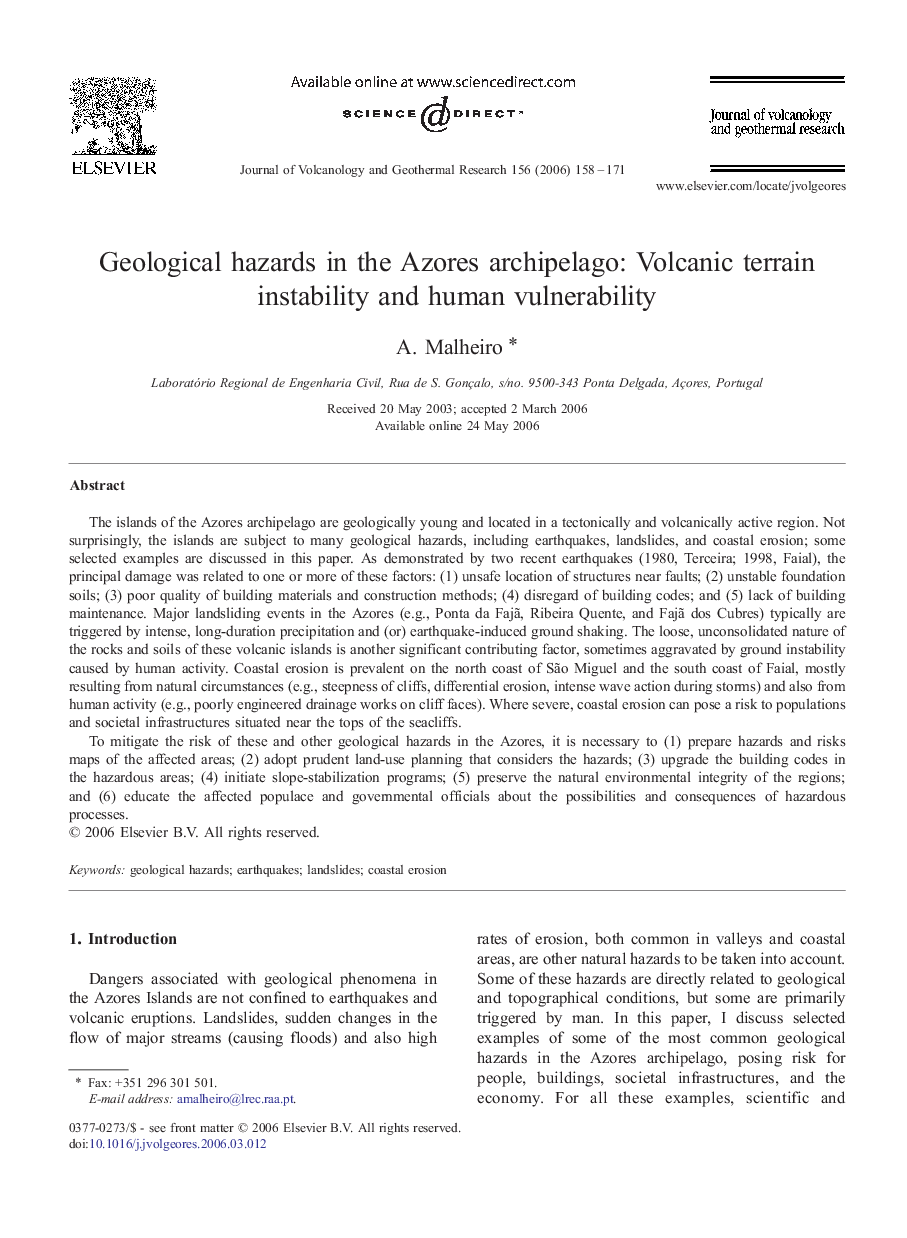| کد مقاله | کد نشریه | سال انتشار | مقاله انگلیسی | نسخه تمام متن |
|---|---|---|---|---|
| 4714994 | 1638474 | 2006 | 14 صفحه PDF | دانلود رایگان |

The islands of the Azores archipelago are geologically young and located in a tectonically and volcanically active region. Not surprisingly, the islands are subject to many geological hazards, including earthquakes, landslides, and coastal erosion; some selected examples are discussed in this paper. As demonstrated by two recent earthquakes (1980, Terceira; 1998, Faial), the principal damage was related to one or more of these factors: (1) unsafe location of structures near faults; (2) unstable foundation soils; (3) poor quality of building materials and construction methods; (4) disregard of building codes; and (5) lack of building maintenance. Major landsliding events in the Azores (e.g., Ponta da Fajã, Ribeira Quente, and Fajã dos Cubres) typically are triggered by intense, long-duration precipitation and (or) earthquake-induced ground shaking. The loose, unconsolidated nature of the rocks and soils of these volcanic islands is another significant contributing factor, sometimes aggravated by ground instability caused by human activity. Coastal erosion is prevalent on the north coast of São Miguel and the south coast of Faial, mostly resulting from natural circumstances (e.g., steepness of cliffs, differential erosion, intense wave action during storms) and also from human activity (e.g., poorly engineered drainage works on cliff faces). Where severe, coastal erosion can pose a risk to populations and societal infrastructures situated near the tops of the seacliffs.To mitigate the risk of these and other geological hazards in the Azores, it is necessary to (1) prepare hazards and risks maps of the affected areas; (2) adopt prudent land-use planning that considers the hazards; (3) upgrade the building codes in the hazardous areas; (4) initiate slope-stabilization programs; (5) preserve the natural environmental integrity of the regions; and (6) educate the affected populace and governmental officials about the possibilities and consequences of hazardous processes.
Journal: Journal of Volcanology and Geothermal Research - Volume 156, Issues 1–2, 1 August 2006, Pages 158–171